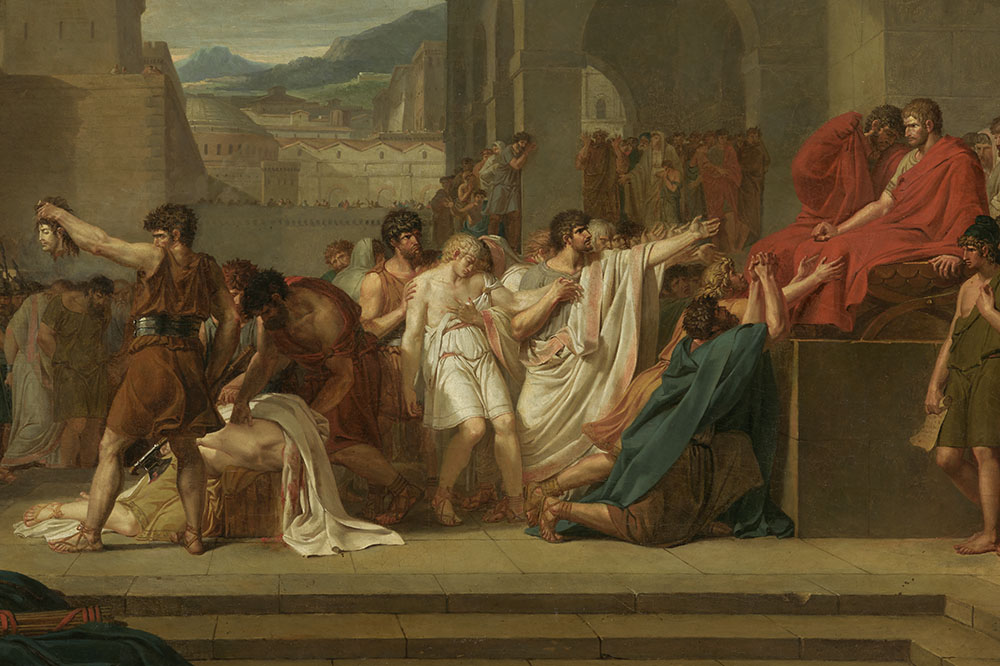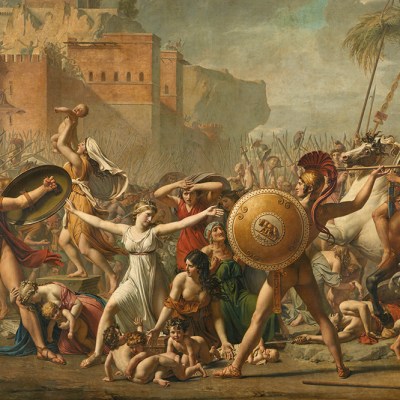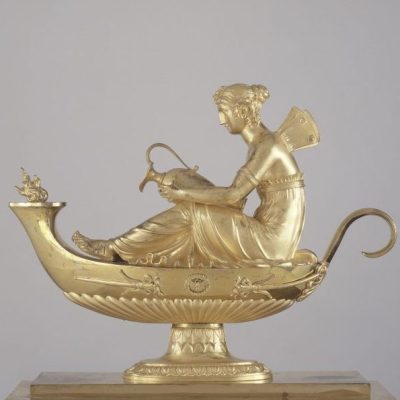From the January 2025 issue of Apollo. Preview and subscribe here.
That Oath of the Ancestors is both a masterpiece and its maker’s chef-d’oeuvre is beyond question. It is also the case that, until now, you are unlikely to have heard of the painting, or Guillaume Guillon-Lethière, the man who made it. These paradoxical facts are the subject of an exhibition this winter at the Louvre, after a spell last summer at the Clark Art Institute, Massachusetts, which jointly organised it. Né à la Guadeloupe, the Louvre’s subtitle, is how the artist signed Oath of the Ancestors when he finished it in 1822. By then, Lethière had been crowned with laurels of the kind often seen in French neoclassical painting, not least his own.
A laurel wreath sits on the bust of the satyr that ogles the nude wife-to-be of Napoleon’s brother, Lucien, in Lucien Bonaparte Contemplating Alexandrine de Bleschamp Jouberthon (1802). In 1807, Lethière had been made director of the French Academy in Rome by Lucien’s older brother, Napoleon. He flourished under the Bourbon Restoration, too, being elected to the Institut de France in 1818, and becoming a professor at the École des Beaux-Arts a year later. His standing was that of neoclassical contemporaries such as David and Ingres. Their names and work have not been forgotten.
Oath of the Ancestors (1822), Guillaume Guillon-Lethière. Musée du Panthéon National Haïtien, Port-au-Prince. Photo: © RMN-Grand Palais/Art Resource, NY
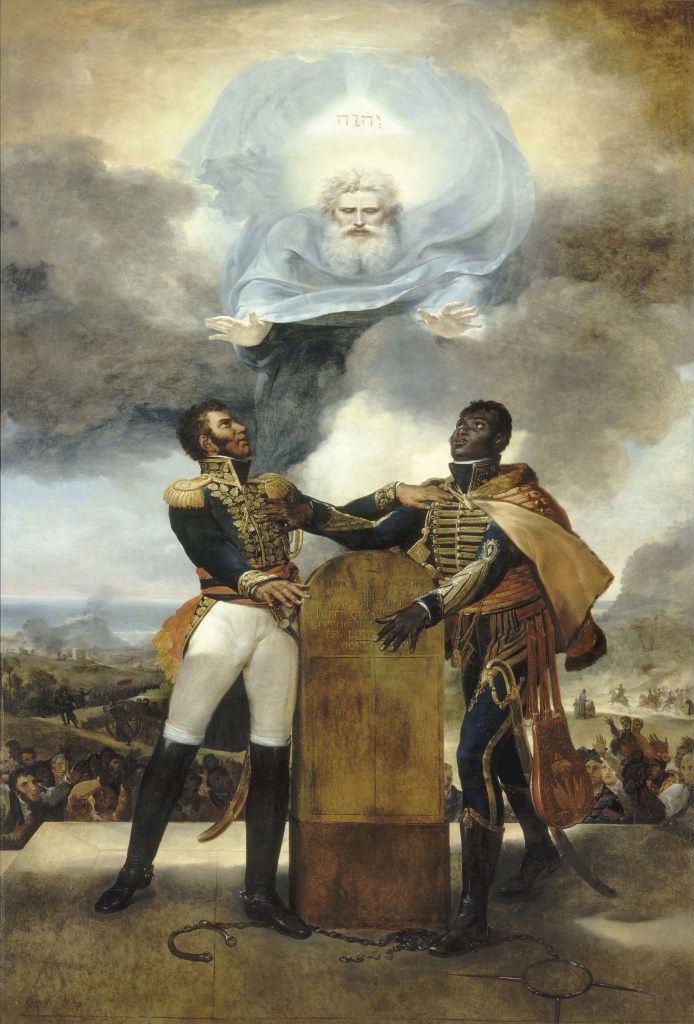
So why have Lethière’s? That Oath of the Ancestors is not in the Louvre’s show is unfortunate but salutary. The museum’s explanation for its absence is that the painting was ‘not fit to travel’. Apart from two trips abroad, it has been in Haiti since it was sent there by its maker in 1823. Degraded by two centuries of tropical heat, it was returned to France for restoration in 1995, stopping off at Lethière’s natal Guadeloupe on its way home. After being damaged in the Haitian earthquake of 2010, it was again sent to the Louvre to be restored, before returning to the Musée du Panthéon National Haïtien. Oath of the Ancestors is on the cover of the handsome and scholarly catalogue that accompanies the exhibition. Yet the painting itself is missing.
Its lack is a reminder that museology, like history, does not always run on well-oiled wheels. The subject of Oath is a pair of generals, Jean-Jacques Dessalines on the right and Alexandre Pétion on the left, each with a hand on the other’s shoulder and another on a stone stele. As befits their rank, both wear uniforms frogged in gold braid, epaulettes, riding boots and swords. What is less usual about them is that they are men of colour: Dessalines, born into slavery, Black; Pétion mixed race. So, too – but unseen – was the artist who had painted them, who was the son of a French planter and an enslaved woman.
It is a wonderful work and a vexing one. Dessalines and Pétion had led the revolt that drove the French from Haiti. Lethière’s gift of the painting to the island was both a gesture of solidarity from a fellow Antillais, and a vision of a world in which men of all colours would be brothers. As scholars have noted, an oddity of the picture, given this last ambition, is that the God who blesses it is white. Or is he? There is nothing in Ingres’ pencil portrait of Lethière, made in 1815 when the subject was his pupil in Rome, to suggest Lethière’s mixed origins. The same is true of the portrait of him, from c. 1820, by another of his students, Mélanie d’Hervilly.
One possible explanation for this is that whiteness was accorded as a sign of respect: by students to their eminent teacher; by that teacher to God. Lethière – a surname he appended to his father’s, le tiers denoting an illegitimate third son – had certainly been on the receiving end of racism. Born in 1760 under the Code Noir, his status as the child of a Black mother would have been different from that of his white father, even though that father had sent him to study in Paris at the age of 14. It was only with the Revolution that Lethière would have the same legal standing of a David or an Ingres. Napoleon’s reinstitution of slavery in the French Empire in 1802 made these gains tenuous.
Perhaps that is why the most interesting works in the exhibition are Lethière’s portraits of women. Their fortunes during the Revolution paralleled those of Black French men. Granted new rights by the National Assembly, French women were encouraged to become radicalised – depictions of Marianne herself, the symbol of France, changed after 1789 from winsome to bloodthirsty. By 1794, Robespierre had come to fear his newly amazonian sisters-in-arms. Many were sent to the guillotine, notably Olympe de Gouges, whose essay Réflexions sur les hommes négres (1788) had argued for the abolition of slavery.
Woman Leaning on a Portfolio (c. 1799), Guillaume Guillon-Lethière. Worcester Art Museum. Photo: Worcester Art Museum/Bridgeman Images
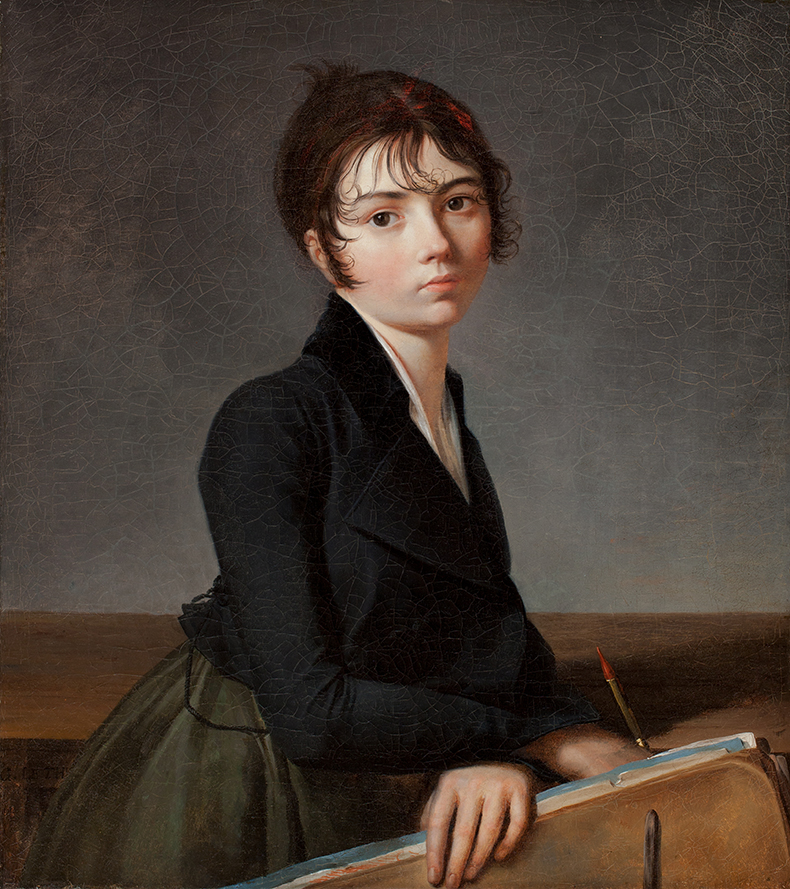
It is thus not the masterly, first-fifteen-in-togas paintings such as Death of Caesar (c. 1795) that make Lethière interesting – the so-called grandes machines – but ones such as Woman Leaning on a Portfolio (c. 1799). Lethière was notable for the number of women he took on as pupils. His other sitters tended likewise to be women of talent and ambition – the harpist Adèle Papin, fashionably Directoire in her Greek tunic; the unnamed subject of Portrait of a Composer (1791).
The gaze these women direct at the man who paints them is as appraising as the one he directs at them. It is a look returned, the look of equals. Subservience in women seems to have discomfited Lethière. His picture of the naked Alexandrine de Bleschamp is uncharacteristically clumsy, an embarrassed reworking of Goya’s Nude Maja. A wooden portrait of Joséphine, Empress of the French (1807) presents her as a puppet. It has nothing of the complicity of Lethière’s images of newly liberated women, the sense of a secret shared. That secret – a momentary equality, brought about by the Revolution – was to prove as fugitive for women as it was for Black French men.
‘Guillon-Lethière, “Born in Guadeloupe”’ is at the Musée du Louvre, Paris, until 17 February.
From the January 2025 issue of Apollo. Preview and subscribe here.
